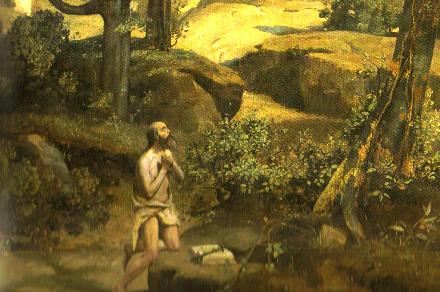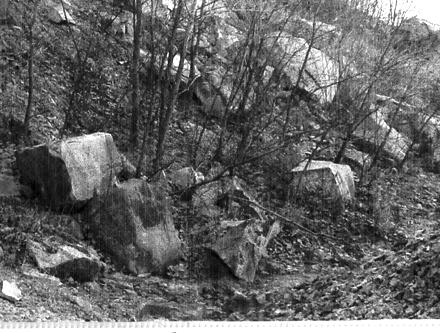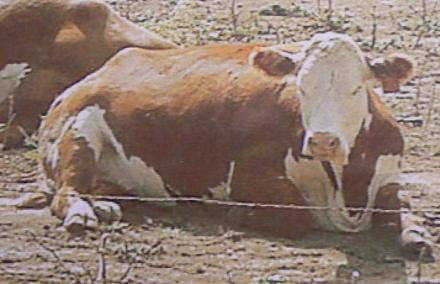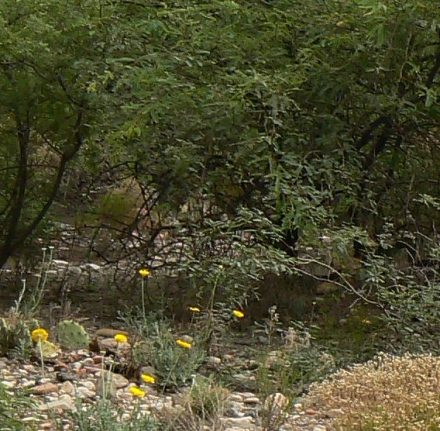Charcoal Drawings and Mixing Eggs May 2007
I broke my fast today, Thursday. The layer of fur fuzz on carpet and
kitchen floor got sucked up as I ran the vacuum cleaner. The air filters under
the house were replaced. The hairy front and side yards were mown.
I even resumed washing my hair. You see, the past nine days have been
devoted to "mixing eggs," I mean, well, I am getting ahead of myself here,
let me back up. School and my teaching job ended nine days ago and I began
to do my "other job," my picture-making profession, acrylic landscape paintings.
My wife Jan graciously gave me grace to NOT mow, NOT do the dishes,
NOT vacuum the house, but she TOLD me I HAD to PAINT. I still had to
"walk the dog," my nightly duty. The July Merriam show is "around the corner,"
with the list of titles needing to be turned in by mid-June. Summer school,
which we both signed up to teach, begins tomorrow, Friday, June the First.
We both wanted me to go as far as I could "unimpeded" PAINTING "before"
the summer school schedule brought its share of distractions.
So, ok, I want to show you "the paintings" but all I can show you is
"the homework", I mean the "sketches" (although I am uncomfortable with
that word). You see, I have a friend who draws alot, Joe Tonnar
(http://karl.marxhausen.net/joetonnar.html ). He draws so well that
he has a hard time painting from his pastel-work. They are two different
processes. He's been telling me to draw more. And, hey, I draw with paint
as I paint on my canvas or panels. I work it out right there, layer on top
of layer, not much preliminary stuff. Any how, I have been "mixing eggs,"
here, I'll show you what I mean by that. They are charcoal drawings,
studies of cattle.
Say, I come up to you, all excited and I say, "Look, I can mix eggs with
a fork, manually," and then I add, "look at this batch of mixed eggs and this
other batch of mixed eggs and this other two bowls of mixed eggs." Well,
you are going to ask me "what are the mixed eggs are FOR?" The skill of
mixing eggs with a fork is a good one to attain, I guess, but it's appreciation
is momentary, and most cooks would see it as a "stepping stone" in a recipe,
whose process finishes with an audience and a story about the occasion
being celebrated. Those stories will have to wait. This is how I FEEL about
charcoal drawings in relationship to my paintings.
That being said, I AM learning or letting it grow on me, into me.
Last night my wife Jan asked me to give the charcoal some time, but then
go back to the way I have been painting, which she said, has turned out
a number of acceptable works.
I have found that when I draw with the charcoal pencil, it helps me
to interpret what I am looking at. I am frustrated that it "takes time,"
it smudges too easily, it's messy, the point needs to be sharpened
by a kitchen knife (because a hand-held pencil sharpener tears it up terribly),
and it's NOT in color. It has shades of gray. The harder you scribble,
the darker it gets. I have tried color oil craypas, which I don't like.
They are not precise. They are general bits of color. It does not mix
like my paints do. And when I try to mix them, it's unproductive,
it's a mess, and I admit, I have not acquainted myself with its nuances.
Still, as you look below, you will see what I drew. And you will see
what I've been working on the past nine days on sketch paper.
This process of drawing DOES enable me to take what I need
from my photo file on the computer, taken with my own camera, and use
it for subject material when I paint in the studio. Let me give you some
examples below.
I found a creek bed not far from my studio and took file photos of it.
The nearby Griffin Farm has lots of land with hills and rocks and ravines
and trees and cattle. I took file photos of cattle drinking water, climbing
slopes, and sleeping in clusters.The zoom on my Panasonic DMC-FZ7
enabled me to capture all these shots from the public roadway. I use
my Lumix Simple Viewer software to retrieve and edit the images, and
file them away in a folder on my Dell XPS 210 computer. For this
equipment I am TRULY grateful.
North Creek on 11" x 14" sketch paper Layout for cow positions on path
I envisioned the kinds of cow positions to place within this setting.
Then I found file photos that came close to what I imagined, and did charcoal
studies of each.
File photo of black cow going up File photo of brown cow going down
Charcoal of cows going up and down Four cow positions
shadows would cover the opposite bank. Then I did this charcoal drawing while
looking at my computer screen from the file photo.



